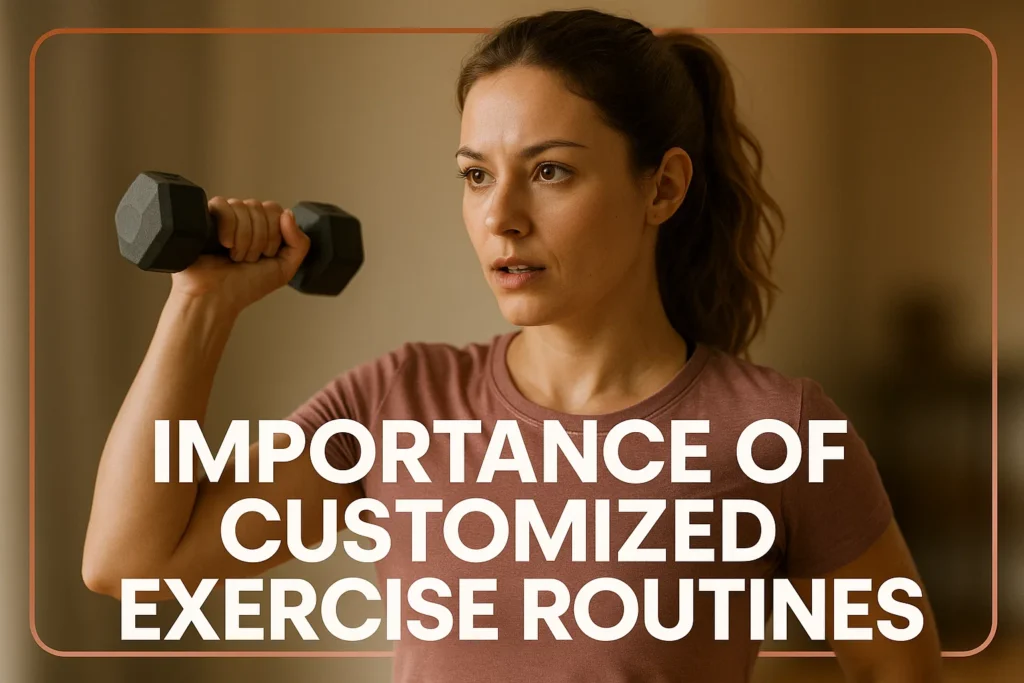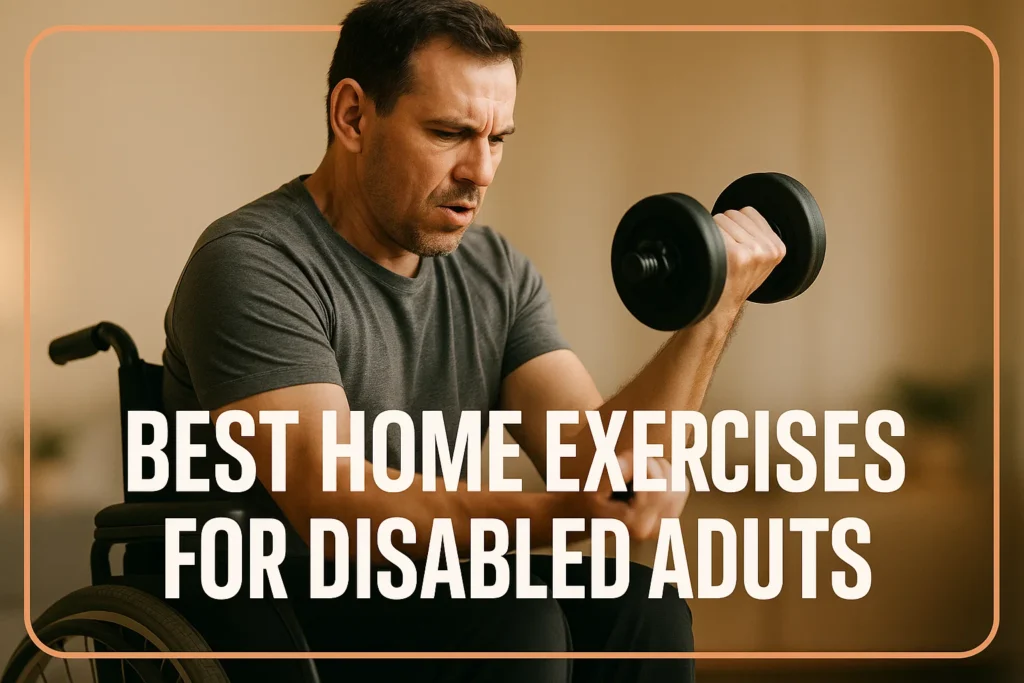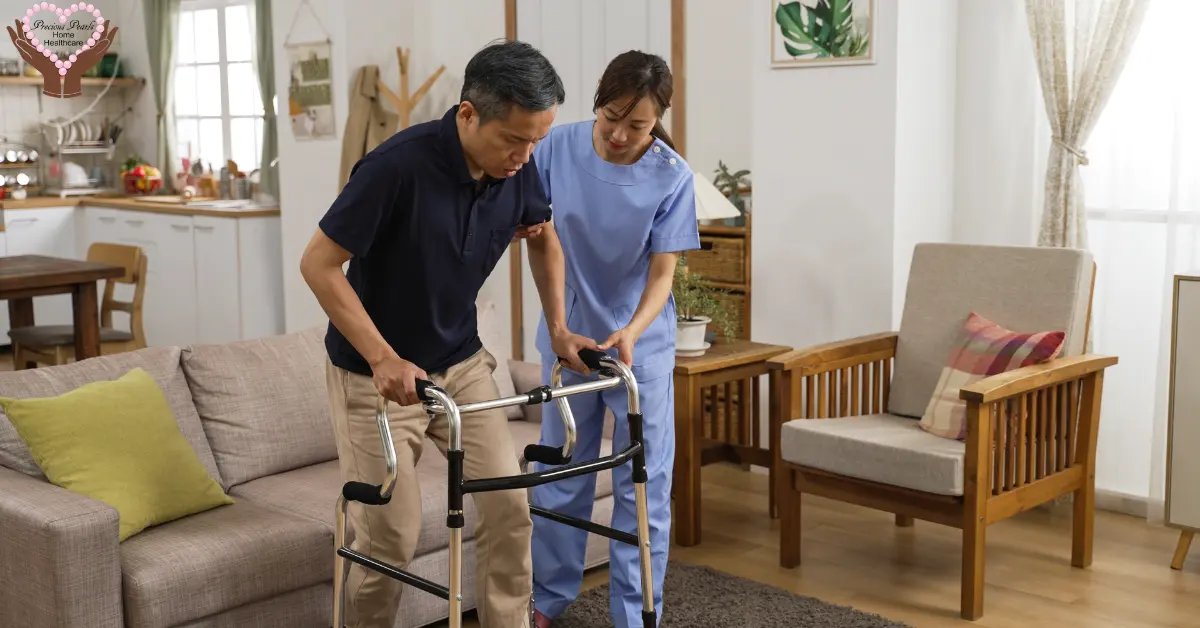Suffering from a disability doesn’t mean you have to give up on getting and staying fit or being healthy. In reality, physical activity is essential for physical strength, emotional health and independence. While you may not be fully mobile, are still rehabbing an injury or use a wheelchair, there are home exercises for disabled adults that can help build strength and keep you active in the comfort of your own home.This guide covers everything from safe exercises for adults with disabilities to adaptive workouts customized for different levels of ability, so you can have confidence getting started.
Why Exercise Matters for Adults with Disabilities
Benefits of Staying Active at Home
Regular exercise is important for everyone, but for the disabled, it can be especially beneficial. Disabled and low-impact Seated exercises Your body, muscles and blood need to in reasonably good order to eliminate stiffness and move around better to facilitate regular blood flow around your body Massaging and stretching your body whilst working out can help with these Blood flow exercises It’s important to maintain muscle tone and joint mobility to ensure a good quality of senior care lifestyle.But physical health is only half the story. Participating in mild exercises for disabled adults also can improve cognitive clarity, elevate mood, as well as give you a more heightened feeling of independence.
Physical and Mental Health Improvements
Working out triggers endorphins, those “feeling good” chemicals that can melt away your bad mood. Low impact home workouts for those with limited mobility Daily low-impact home workouts can also help:
- Reduce anxiety and depression
- Enhance sleep quality
- Boost self-esteem
- Improve energy levels
Even if you’re able to do only 15 minutes of wheelchair exercises at home, it can make a measurable difference in your general well-being.
Importance of Customized Exercise Routines

Exercise programs must be individualized, particularly in the case of adults with disabilities because a blanket strategy is incapable of addressing the needs of the individual. Custom routines help perform safer, more efficient and more realistic workouts.
Individual Needs and Restrictions
Every individual is different in his or her abilities, what they are incapable of and what they can aspire to achieve. Personalized exercise regimens take these differences into account, such as the type and level of activity, as well as equipment availability, and make fitness possible and safe- often something that can be done at home.
Benefits of Personalization
Individualized exercises are concentrated on strengthening specific body parts, flexibility and body improvement as well as the prevention of injuries. They are adaptable to adaptive tools and changes of movements to harmonize comfort and ability levels.
“Changed on heading the previous on was ‘Safety First: Preparing for At-Home Workouts’. Now i have updated it with ‘Safety Measures in At-Home Workouts’ and it should be H2 heading after this heading there are three H3 heading those should be part of this”
Safety Measures At-Home Workouts
Home exercise is an almost effortless way to perform workout, but also poses some safety concerns. When not guided by a coach or without the help of equipment, minor details may be missed giving way to injury. Safety during home workouts is paramount to the safety of any individual exercising at home with the goal of attaining fitness. It is not only to do exercises, it demands to provide the right atmosphere, equipment and to apprehend the boundaries within your body.
These injuries can be reduced by simply ensuring you exercise in the right space, talking to a medical expert, and wearing the appropriate clothing. This way, working out will be beneficial and enjoyable to you. Making safety a top priority enables you to be more consistent in your fitness endeavors, which helps avoid the occurrence of setbacks as well as facilitate long-lasting health.
Mental and Cognitive Activities for Disabled Adults
Mental and cognitive activities allow persons with disability to feel a sense of achievement, self-reliance and clarity of mind. They offer good chances of cognitive-stimulation and aid in curbing loneliness in that they create social interaction. With the introduction of personalized mental activity into their everyday schedules, disabled adults can greatly benefit the quality of their lives and health.
Positive mental and cognitive undertakings may be:
Puzzle Games: These could be crosswords, Sudoku puzzles or block jigsaw puzzles that are to test the memory, logic and recognition of patterns.
Memory Games: Anything that aids memory that promotes recall, like memory matching games, or memory cards where certain association should be used.
Brain Training Apps: Mobile applications that practice their skills in areas of the mind such as attention, speed and memory.
Reading and Writing: Interest in reading books or scribble in a diary and encourage mental concentration and sharpen attention.
Art and Music Therapy: Activities that promote self-expression, release of emotions and thoughtful activities.
Social Interaction Activities: Joining online discussion groups or community work-shops enhancing communications and the ability to connect emotionally.
VR Games: VR games that can help to enhance cognitive skills and potentially train engagement with real-life problem solving.
These will assist in building a feeling of accomplishment, providing mental stimulation and emotional support which translates into a more fulfilling and healthier life style.
Personalizing an Activity Plan of Disabled Adults
The process of forming a personalized activity plan among the disabled adults takes into account the peculiarities, interests, and capabilities. A good plan has the capacity to promote physical, cognitive as well as emotional well-being building by making it accessible, enjoyable and attainable.
1. Evaluate Needs and Abilities
Review the physical aptitude, cognitive health and interests of the individual in order to customize the plan. Man is concerned with the level of mobility, mental ability, and hobbies.
2. Develop Realistic Goals
Make both immediate and far-reaching objectives, including making the memory better or physical stamina. Monitor progress and remain motivated and set targets as they change.
3. Diversify the Activities
Incorporate both physical activities, such as stretching or seated activities and mental activities, such as puzzles or creative activity to keep both body and mind active.
4. Fit the Environment
Make the activity space safe and warm. Give any Adaptive equipment needed (adaptive tools or assistance devices) so exercises are comfortable and safe.
5. Track and Tweak
Monitor and modify the plan following the feedback and changing needs of that individual. Make sure that it is flexible enough to allow changes in the course of every day and eliminate burnout.
Best Home Exercises for Disabled Adults

So assuming you’re ready to get started, I’d like to detail some of the best and safest exercises for your current level of ability.
- Seated Arm Lifts and Shoulder Rolls: A strong chair Operators Sit up straight in a sturdy straight back chair. Bring your arms overhead and return, slowly lowering them. That makes for strong shoulders and upper back. ” Finish with slow shoulder rolls forward and backward to relieve tension and improve posture.
- Chair Yoga and Stretching: Chair yoga aids in flexibility, balance and relaxation. Try seated side bends, easy neck rotations and forward folds. These motions can loosen you up and get your blood flowing.
- Leg Raises and Ankle Rotations: Sit to leg raise If you have some lower body mobility, doing a leg raise from a sit position engages thigh and hip muscles. Circulate your feet in small circles to keep the joints moving and avoid cramps or swelling.
- Resistance Band Exercises: With light- to medium-resistance bands, you can target curls, rows or shoulder presses. These chair or bed exercises can help you stay on track with your fitness routine with minimal stress on your joints.
- Breathing and Posture Correction Drills: Deep breathing exercises increase oxygen flow and soothe the nervous system. Connect your breath with posture work — such as sitting down and aligning your spine, to stave off back pain and increase focus.
- Mild Cardiovascular Exercise: Some great ways to get your heart rate up are seated marching in place or to an arm cycling machine. It even gets the blood flowing in small, repeating movements providing improved endurance and better heart health.
- Home Exercises by Mobility Level:Adapting your exercises to fit your personal range of motion will allow you to experience the greatest benefit with the least risk.
For Wheelchair Users:
Most wheelchair workouts at home emphasize the upper body. Options include:
- Arm circles
- Resistance band pulls
- Seated boxing movements
- Shoulder shrugs
These tone muscles while allowing you to remain seated.
For Partial Mobility
If you’re able to stand with some help or a walker, include light standing exercises, such as wall push-ups, partial squats, or leg lifts with support. Pair with seated stretches for a full-body sequence.
For Stroke Recovery or Paralysis
Address the opposite side to which the injury is on it can serve to retain strength in the non-affected limb, and stimuli of movement on the side of injury can assist the recovery. Start with:
- Grip-strengthening exercises
- Active (AROM) and passive range-of-motion stretches
- Passive leg lifts with help
These movements can excite nerves and promote slow but steady recovery.
Simple Equipment That Helps
You don’t have to have a gym to be active. You can stay consistent and safe with just a few simple tools.
- Resistance Bands: It is portable and cheap, resistance bands can be used to conduct dozens of exercises. They’re perfect for the strength training and stretching components of home exercises for disabled adults.
- Light Dumbbells or Household Items: To add resistance during arm lifts or curls, use 1–5 lb dumbbells, or standard water bottles. These are to promote slow muscle growth as well as adding intensity to sitting exercises.
- Stability Balls and Yoga Blocks: Stability ball help build core strength and improve posture. During stretches can provide you with support or put it under the knees, ankles or, in many asanas, the hands.
- Exercise Apps for Disabled Users: Multiple apps provide adaptive workouts that provide easy to follow graphics, spoken cues, and tailored choices. Some examples are WheelFit, Chair Yoga and Adaptive Yoga Live. These can be particularly useful for people who like having guided sessions.
Sample Weekly Workout Plan
3 Day Adapted Routine For Example: Here is how adapted routine for a 3-day would look.
Day 1: Upper Body Strength (30 minutes)
- Bicep Curls Seated W/Light Dumbells
- The shoulder rolls and arm circles
- Resistance band rows
- Breathe deeply + posture drill.
Day 2: Flexibility and Balance (25 minutes)
- Chair yoga stretches
- Neck and back rotations
- Rolls of the ankle and extensions of the leg
- Seated forward folds
Day 3: Light Cardio and Core (30 minutes)
- Arm punches sitting position PUNCHES (1 minute segments)
- Marching in place
- Seated torso twists
- Breathing techniques
Each day can be repeated on an as-needed basis, or adapted to meet your available energy and mobility. The idea here is not to press too hard, but to hold your pace.
Tips for Progression and Staying Motivated
Keep track of your reps and sets with a basic log
- Track your reps and sets using a simple log
- Set small weekly goals
- Connect with online support groups and adaptive workout communities
- During workouts, play music or podcasts
- Incentivise your efforts for being consistent
In time, you’ll experience gains not only in strength and skill but also in confidence and inspiration.
Final Thoughts
Working out at home doesn’t mean you need fancy machines or hours a day. With the proper safe exercises for adults with disabilities, a couple of household aids and a clear plan, you can experience better health, greater mobility and independence. So, whether you’re in a wheelchair, walking a bit or recovering from a stroke, the secret is to move at your own pace and have fun doing it.
At Precious Pearls Health Home Care, we recognize that people face varied mobility struggles. Our professionally trained caregivers can help with personal hygiene, exercise support, and establishing a daily routine that encourages overall health, upholding you and your loved one’s quality of life.Get in touch with Precious Pearls Health Home Care now and learn more about how our caring staff can help you achieve all your health goals.
FAQs
Good options include seated arm lifts, resistance band pulls or chair yoga, and light cardio of the arm cycling variety. They are safe, effective and can be easily done at home.
Absolutely. Low-impact home workouts for limited mobility can help us gain strength, increase circulation, and boost mood while not struggling against our joints.
Set smaller goals, employ tracking tools, find online communities and make workouts fun with music or videos. The secret is to create a program and a regimen that works for you and your life.






